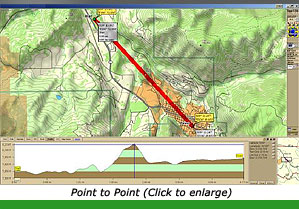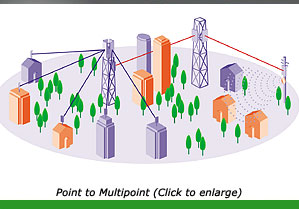 

|
 |
| ..::TECHNOLOGY::.. |
Point to Point & Point to Multipoint
Point to Point (PTP) can be utilized in many ways. It can be used to connect buildings and offices or join a city in a wireless ring. It is used to backhaul large amounts of data over a variety of distances for a number of applications.
Mesh
Ubiquitous coverage. This technology uses repeater, path seeking technology to keep the best signal as possible. Mesh has been found to be very useful in a number of different ways. From tactical deployments for U.S. Swat teams and Military to Municipal City WiFi networks. Mesh networking is a way to route data, voice and instructions between nodes. It allows for continuous connections and reconfiguration around broken or blocked paths by "hopping" from node to node until the destination is reached. A mesh network whose nodes are all connected to each other is a fully connected network. Mesh networking is a subclass of mobile ad hoc networking.
Mesh networks are self-healing: the network can still operate even when a node breaks down or a connection goes bad. As a result, a very reliable network is formed. This concept is applicable to wireless networks, wired networks, and software interaction.
A mesh network is a networking technique which allows inexpensive peer network nodes to supply back haul services to other nodes in the same network. It effectively extends a network by sharing access to higher cost network infrastructure.
VoIP
Voice over Internet Protocol, also called VoIP, IP Telephony, Internet telephony, Broadband telephony, Broadband Phone and Voice over Broadband is the routing of voice conversations over the Internet or through any other IP-based network.
Protocols which are used to carry voice signals over the IP network are commonly referred to as Voice over IP or VoIP protocols. They may be viewed as commercial realizations of the experimental Network Voice Protocol (1973) invented for the ARPANET.ce providers. Some cost savings are due to utilizing a single network to carry voice and data, especially where users have existing underutilized network capacity they can use for VoIP at no additional cost. VoIP to VoIP phone calls on any provider are typically free, whilst VoIP to PSTN calls generally costs the VoIP user. |
| |
|
|
|
|
